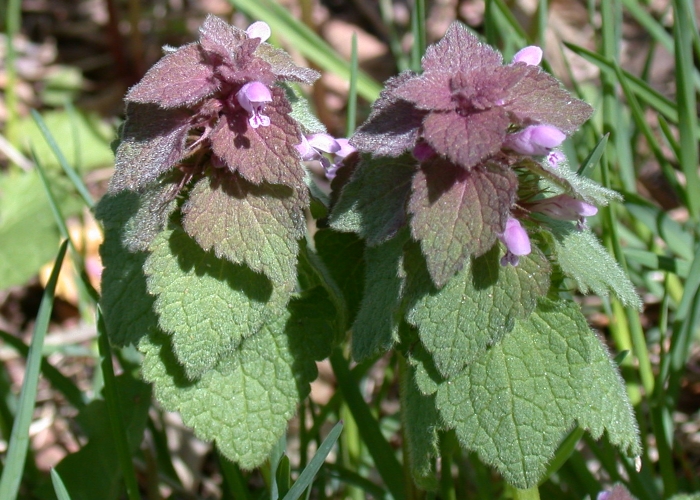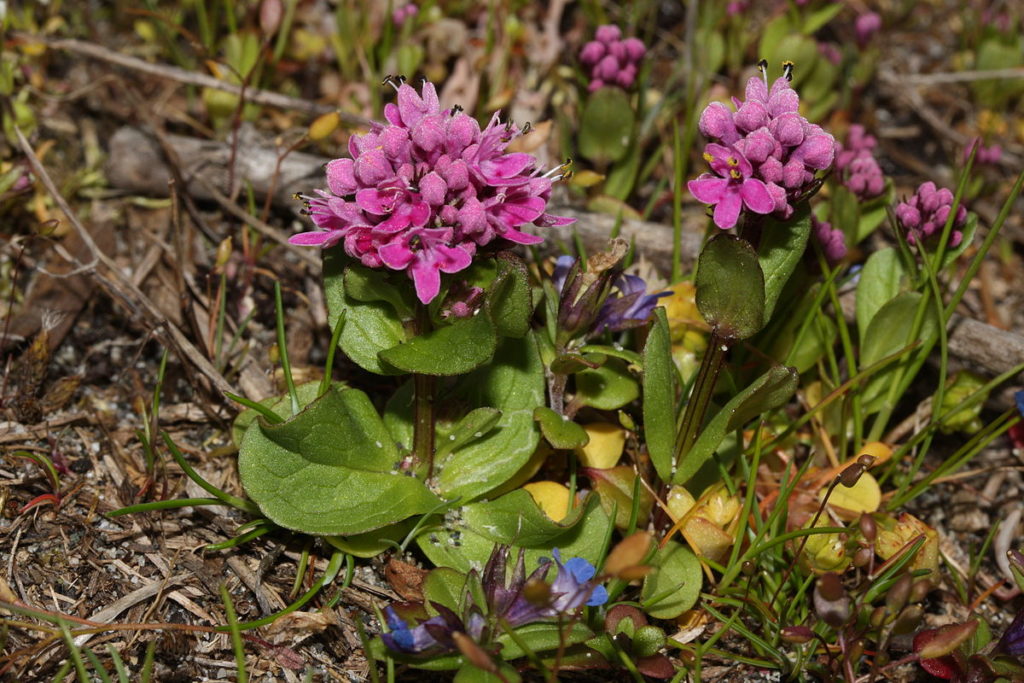Subject: Purple deadnettle (Lamium purpureum)
Description: Purple deadnettle–and its look-alike relative, henbit (L. amplexicaule)–are short (usually less than 1′, or 30 cm), annual members of the mint family. Why “dead nettle?” The “dead” means the hairs don’t sting. The leaves are triangular to heart-shaped, fuzzy, toothed (fine and pointed on deadnettle, coarse and rounded on henbit), and sparsely distributed opposite one another on most of the square stem (a common mint family characteristic), then clustered densely at the top; these top leaves often take on a reddish cast. Pink-purple flowers emerge out of these clusters, usually in early spring; these are very typical mint-family blooms, with petals fused into a tubular, “hooded” structure with a forked “tongue” underneath (the effect is sort of a sock-puppet manatee). Once pollinated, these turn into hard, mottled brown seeds, about 1 mm wide and 2 mm long. Both species die back after seeding.
Spread: Both species are annuals, and spread entirely by seed. They are native to Europe and western Asia, and are widespread in lawns, natural areas, agricultural fields, and neglected spaces throughout the US. The young leaves are edible raw, and can also be used to make a tea.
Control: Henbit and purple deadnettle have fairly weak root systems, and are easily pulled. Pulling the plants before they can set seed will help prevent their spread; an established population will likely require several years of pulling to exhaust the seed bank in the soil.
Native replacement: Rosy plectritis (Plectritis congesta) is a pink-flowered, native annual that blooms in early spring that will grow in sunny, grassy areas such as those favored by these two species.


